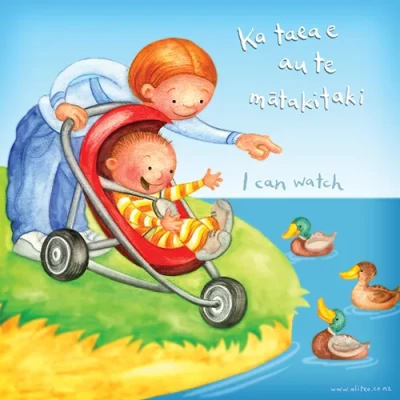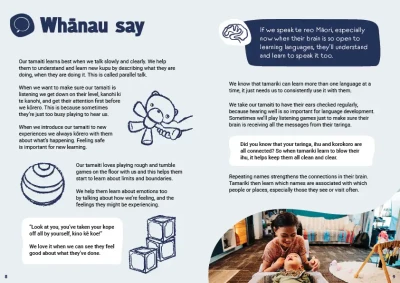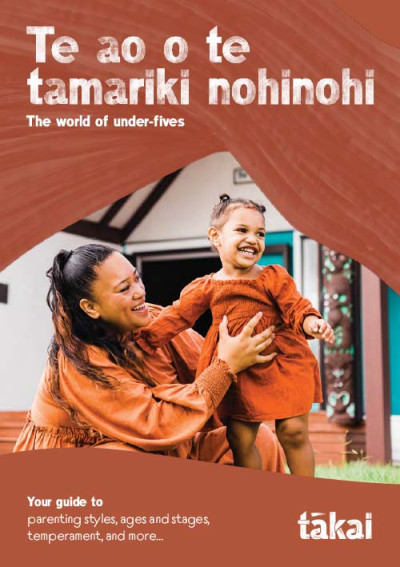
Stop and listen
All children have different temperaments. There are many ways parents can improve their skills so they can get their child to stop and listen.
Improving parents' listening skills
Parents can help their toddler learn to pay attention through simple everyday play.
Look at the ‘Whānau say’ section on page 8 of Whakatipu Te Kōhuri 1 with the parents, where it says ‘...sometimes they're just too busy playing to hear us.’ Ask:
- Does this happen to you?
Toddlers can be focused on something else entirely or not too keen on the message being shared by their parents, such as ‘Time for bed’. It’s important to remember to check they can hear you.
Here are some tips to improve listening:
- Get down to the child’s level or, if need be, calmly pick them up and hold them.
- Block out the other distractions to help get their attention. This is especially helpful in a busy home and with an active child.
- Talk with the child about things they’re interested in.
- Play games that require verbal directions.
- Enjoy rhymes and songs.
- Change vocal pitch and tone to make stories and books interesting and fun.
- Use a more serious but calm voice to reinforce other messages and prepare the child for upcoming change, for example, ‘When we’ve finished reading our book, I’m turning off the light so you can go to sleep.’
- Check for understanding. Do they know what is expected of them?
- Give positive feedback and praise when they’ve achieved or tried hard with a request or activity.
- Be realistic. Are the expectations reasonable for their level of maturity and ability?
- Have you tried any of these ideas before? How did you get on?
Getting toddlers to stop and listen works well when it’s done in a calm and friendly way and the instructions are given as an invitation. Here are some examples:
- ‘Who is going to help dad pack up these toys?’
- ‘Listen, I can hear the rubbish truck. Shall we take the recycling bin outside?’
- ‘Who can find all the pieces for this shape sorter game?’
Look at the 'pēpi trail' together, on pages 16 and 7 of Whakatipu Te Kōhuri 1. Ask:
- What do you think when you see this cartoon?
Children are individuals
Sometimes people compare one child with another. An older sibling or a friend’s child may be more focused and have very different behaviours. Look at pages 14 and 15 of the resource 'The world of under-fives' about different temperaments.
Kids are all different. Check in that parents’ expectations are realistic for their child’s temperament. Ask:
- What sort of temperament would you say your child has?
- What do you think that will mean for them, especially in how they play and behave?
Each type of temperament has different needs. Look at the mix of temperaments in the whānau. Ask:
- What are the implications of the different temperaments in your household?
Try an activity
It’s time to play a game outside
Listen and copy patterns heard outside for a fun and relaxing way to spend time together.
Helpful resources for whānau
-
Well Child Tamariki Ora visits
Te Whatu Ora
The Well Child Tamariki Ora programme is a series of health visits and support that are free to all families for children from around 6 weeks up to 5 years of age.














